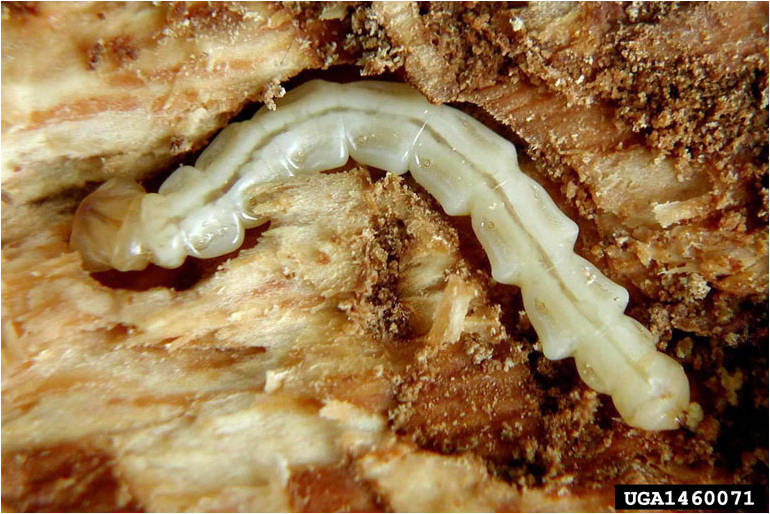EAB eradication program shifts focus, Hoosiers affected
By Kay Hagen
Friday, January 20, 2006
 |
D. Cappaert, Michigan State University
|
WEST LAFAYETTE, Ind. - The Indiana Department of Natural Resources recently announced a change in the state's emerald ash borer eradication program that may have far-reaching effects for Hoosier homeowners who have ash trees in their landscape.
At the same time that the DNR announced a new infestation of EAB in Carmel, Ind., the department also announced that ash trees will no longer be cut down within one-half mile of an infestation. Instead, when emerald ash borers are found, the movement of ash trees and most ash tree products will be restricted, said Bob Waltz, Indiana's state entomologist.
"While the eradication program we were following was an excellent program and would have worked if we had the time and money to complete it, it was simply cost prohibitive to continue," he said. "We're also facing a tremendous hurdle in that we lack an effective way to lure the insect, which makes it hard to determine where it is in the state."
Jodie Ellis, the exotic insects education coordinator at Purdue University , said this new program requires homeowners to be vigilant of the condition of their trees and to be aware of quarantined areas around the state. Under the new program, homeowners also will be financially responsible for the care or removal of any ash trees on their property.
"This puts the decision about whether to try to save the tree or remove it on the homeowner's shoulders," Ellis said.
Phil Marshall, an insect and disease specialist in DNR's Division of Forestry, said, "Homeowners need to consider how important the tree is, what kind of condition the tree is in and how close they are to an EAB-positive tree.
"Look at things like how much dieback there is in the crown, its relative position to the house and whether it's a hazard to the house or roadway. If the tree has a good crown, no dieback and is a long distance away from an known infested area, then it may make sense to keep it. On the other hand, if the tree is unhealthy, or in a position to damage a home, it's probably a good idea to remove it."
For landowners with a planting of ash trees, or people who have many ash trees on their property, Marshall has other suggestions.
"Speak with a forester to determine what's best for your land," he said. "If you use firewood, you may plan to take those trees out. Cut in the late summer or fall, stack it up and plan to use it before the next spring. Ash burns well green or dry."
It's also possible to sell the trees for lumber, and a forester will have the most up-to-date information on prices and timber value, he said.
While the eradication program is changing, Ellis said Indiana residents still play an important role in stopping emerald ash borers.
"We rely on local residents, foresters, loggers, tree removal or trimming crews, and others to report possibly infected sites," Ellis said. "The public also can help us slow the spread of this insect by not moving firewood and by burning all campfire wood when they are visiting campgrounds."
Researchers at Purdue and other universities are working on ways to stop emerald ash borers through things like genetically resistant trees and natural predators, Ellis said. Research in those areas, however, is still in the beginning stages.
"Right now our best advice to people is to keep their trees healthy, be vigilant about where EAB is and make informed decisions on treatment or removal," she said.
More information about emerald ash borer or recommendations for replacing ash trees is available through local Purdue Extension offices and online at http://www.entm.purdue.edu/eab.
Writer: Kay Hagen, (765) 494-6682, kjh@purdue.edu
Sources: Jodie Ellis, (765) 494-0822, ellisj@purdue.edu
Bob Waltz, (317) 232-4120, bwaltz@dnr.IN.gov
Phil Marshall, (812) 358-3621, pmarshall@dnr.IN.gov
Related Web sites:
Purdue Entomology emerald ash borer: http://www.entm.purdue.edu/eab
Indiana Department of Natural Resources EAB page: http://www.in.gov/dnr/entomolo/pestinfo/ashborer.htm
Tri-State emerald ash borer page: http://www.emeraldashborer.info/
|